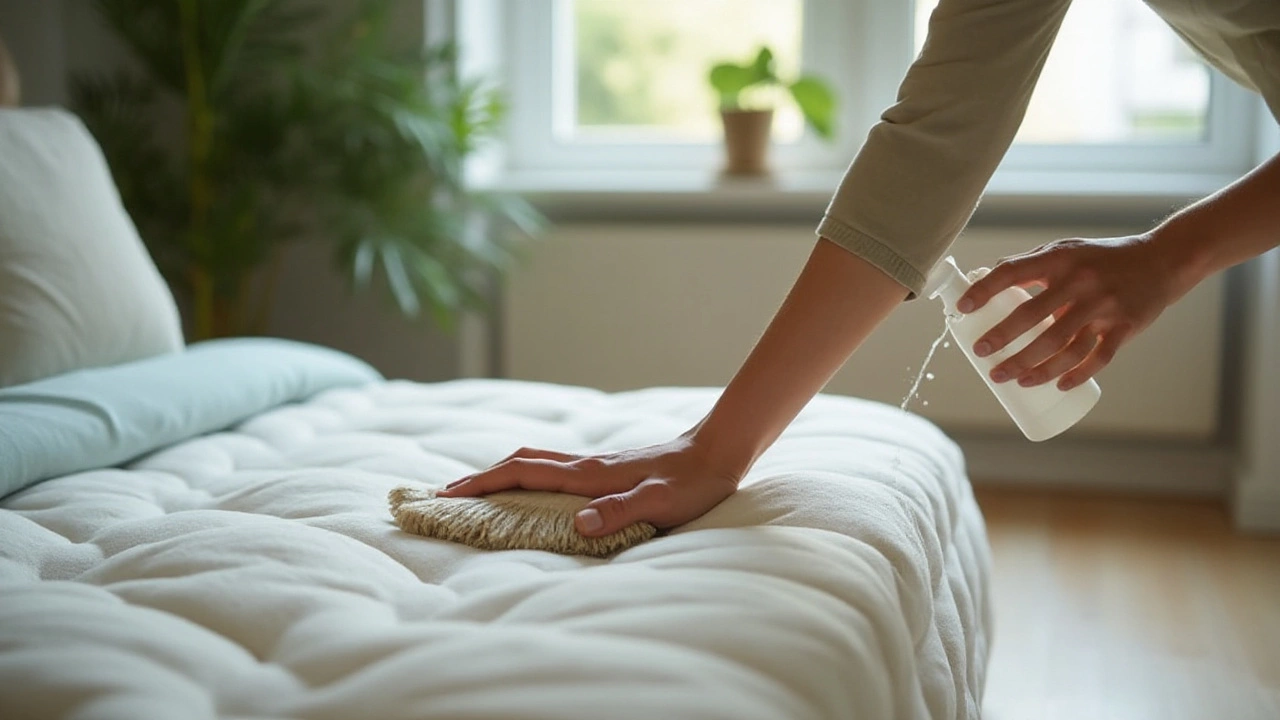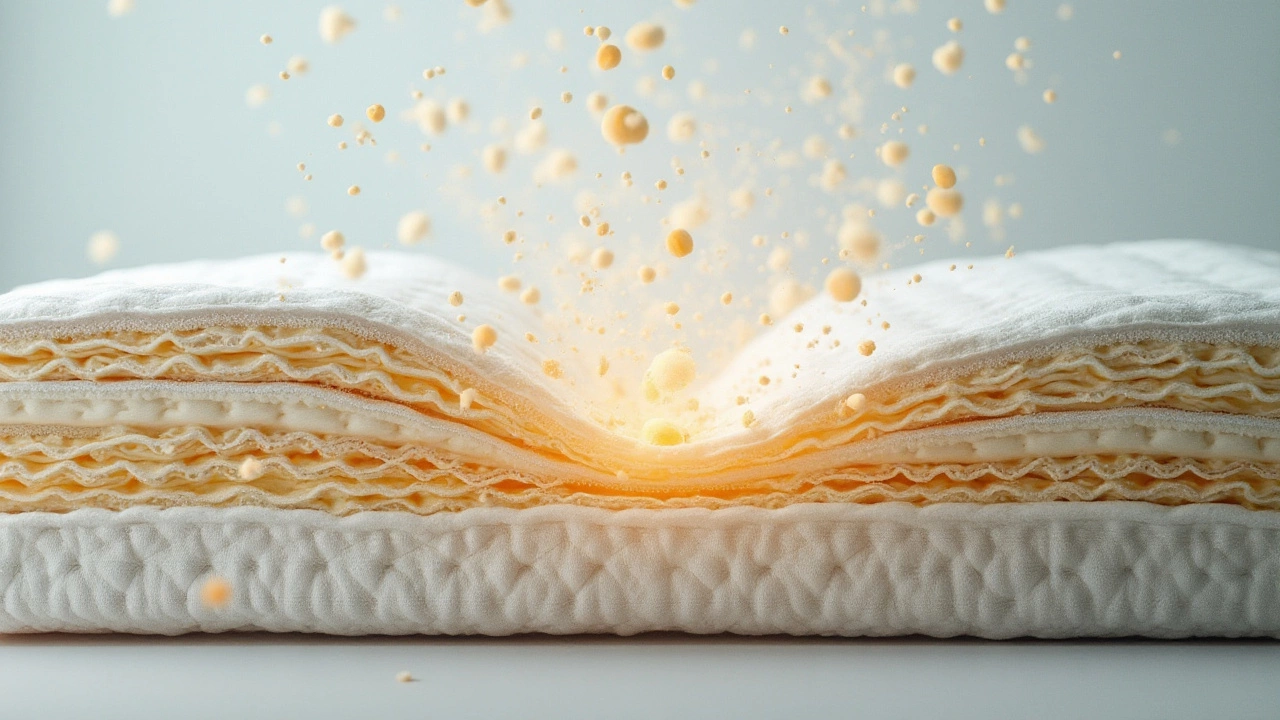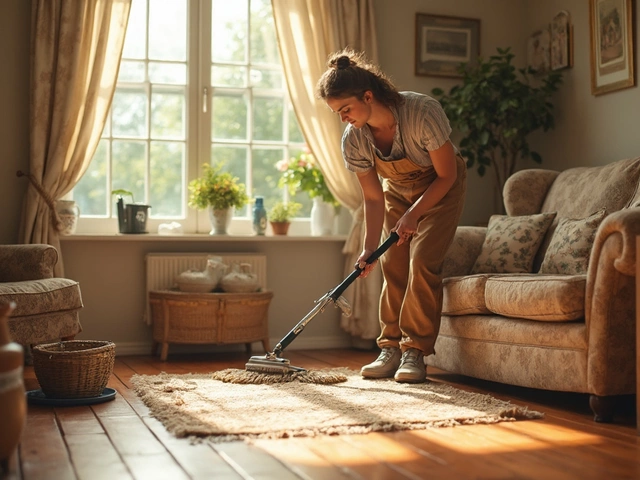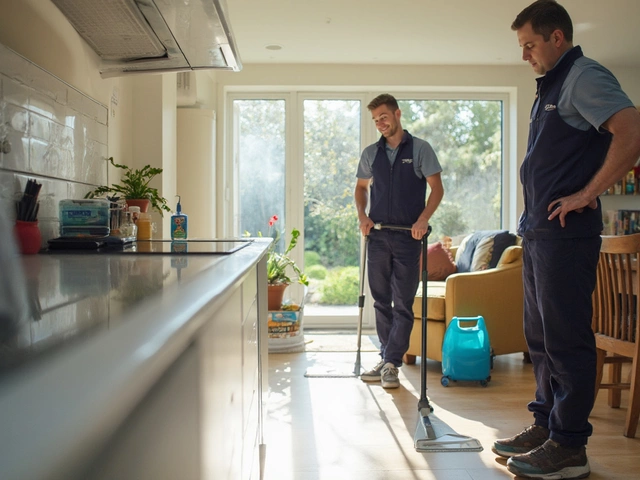Your bed is your sanctuary, a place where you spend a good chunk of your life in restful slumber. It's no wonder that keeping your mattress in pristine condition is vital for maintaining not only comfort but also your health. But how does one go about cleaning the inside of a mattress effectively, you ask? While it might seem a daunting task at first, breaking it down into manageable steps can make the process surprisingly straightforward and rewarding.
Cleaning the inside of a mattress is more than just surface-deep sanitization; it involves understanding what lurks within. Dust mites, allergens, spills, and your dog’s occasional muddy paw print can all contribute to making your mattress less of the haven it should be. In this guide, I'll not only divulge the secrets to a deep and thorough clean but also share insights on maintaining that fresh, just-cleaned feel for longer. Whether you’re preparing for guests or simply giving your mattress a routine spruce-up, dive into these tried-and-tested methods designed to help your mattress stand the test of time while keeping it fresh and inviting.
- Understanding Mattress Contaminants
- Tools and Materials for Cleaning
- Step-by-Step Cleaning Guide
- Preventative Measures for Mattress Care
Understanding Mattress Contaminants
Hidden beneath the seemingly pristine surface of your mattress lies an ecosystem that thrives in the dark. Over time, your mattress becomes the host to a variety of unwanted guests that can affect your health and disrupt your sweet slumbers. One of the most common invaders in this environment is the dust mite. These microscopic creatures are not visible to the naked eye, yet they find their home in the depths of your mattress, feeding off the dead skin cells you unsuspectingly shed each night. As they break down these cells, they produce waste particles that can exacerbate allergies and asthma, especially in susceptible individuals. Keeping your mattress clean is essential to reducing their impact, ensuring a healthier sleeping area for you.
Sweat and bodily fluids also seep into the mattress, creating an ideal breeding ground for bacteria and mold. While it's not the most pleasant of thoughts, every night, our body expels moisture which our bedding absorbs. This moisture can linger and become trapped in the layers, particularly in humid environments, increasing the risk of mold and mildew developing. Mold spores are notorious for causing respiratory issues, which emphasizes the vital role cleaning plays in maintaining mattress hygiene. Many experts agree that regular maintenance can stave off these potential health hazards effectively.
“Regular cleaning and a well-ventilated bedroom can vastly improve the sleeping conditions, reducing allergen exposure by up to 50%,” says Dr. Laura Hatley, an environmental health specialist.
Besides organic materials, everyday pollutants like dust, pet dander, and pollen add to the mix, deteriorating the air quality in your bedroom. If you have a furry friend like my dog Sable, pet hair and dander can quickly accumulate, absorbing into the fibers of the mattress, contributing to a congested sleep environment. A quick vacuum every now and then won’t suffice. Deep cleaning your mattress involves reaching the inner layers where these contaminants settle over time.
Considering all these various pollutants, you can see why it’s important to not just change your sheets regularly but to also address the underlying cleanliness of where you sleep. Adopting a mattress cleaning regimen can significantly enhance longevity and comfort while keeping those pesky mites and mold at bay. Embracing these practices means promoting a more restful night’s sleep every time you climb into bed.

Tools and Materials for Cleaning
Before you roll up your sleeves and dive into the deep clean of your beloved mattress, it's important to gather the right tools and materials to ensure the process is both effective and efficient. Think of this as preparing your arsenal for a battle against the unseen armies of dust mites and allergens that are possibly lurking in your bedding. The good news is that these tools are often readily available in most households, or can be easily acquired from local stores or online marketplaces.
Start with a good quality vacuum cleaner equipped with a hose attachment. A vacuum is your first line of defense in removing dust, dead skin cells, and other debris from your mattress surface. If you have access to a vacuum with a HEPA filter, all the better, as it will capture finer particles more effectively, contributing to improved air quality in your bedroom. While some might say any vacuum will do, investing in one with a strong suction and appropriate attachments can dramatically improve your cleaning results.
Next on the list is baking soda, a surprising hero in the realm of home cleaning tips. This common household staple acts as a natural deodorizer, absorbing odors and moisture from the mattress. To complement baking soda, consider having a mild dish soap or an enzyme cleaner handy for treating potential stains. Always remember that mixing cleaners is not recommended, and spot testing any new product is a must to avoid unexpected fabric damage.
A separate essential tool is a clean, white cloth or a microfiber cloth. These are effective for blotting out stains without transferring any color to your mattress, which could happen if you were to use dyed fabric. Additionally, a scrub brush with gentle bristles can aid in working the baking soda into the fabric or lightly scrubbing stubborn stains. Be cautious, though; using excessive force might damage the fibers of your mattress.
The Role of Steam Cleaners
While not absolutely necessary, a steam cleaner can also be a game-changer. It offers the added benefit of killing bacteria and bed bugs due to its high temperature. This is especially handy if you're dealing with mattress hygiene concerns stemming from illness or bed bugs. Steam cleaning is all about timing and technique; follow the manufacturer’s instructions to prevent over-saturating your mattress, which could lead to mold growth if not dried properly.
According to Dr. Stephen Colley, a renowned expert in household allergens, "An average mattress can contain tens of thousands of dust mites, and steam cleaning periodically can help manage these populations effectively."
This quote underscores the importance of considering a steam cleaner as part of your cleaning toolkit, not just for its cleaning prowess, but for contributing to a healthier sleeping environment. If you're looking to splurge a bit, an upholstery cleaner designed for deep-cleaning soft furnishings can also work wonders, and these are often more versatile, serving additional purposes around the home.
Finally, it's handy to have a fan or dehumidifier close-by post-cleaning, to ensure that any moisture is swiftly dealt with. Moisture is your enemy here, as it can encourage mold, mildew, and unwanted odors to set in, turning your fresh clean mattress back into a breeding ground for germs. By understanding and utilizing the right tools and materials, you'll be well-prepared to tackle and maintain your mattress, ensuring it stays clean and inviting, night after blissful night.

Step-by-Step Cleaning Guide
Tackling the task of cleaning the inside of a mattress can sometimes feel overwhelming, but with the right approach, it can be a manageable and even satisfying chore. Our goal is to make your mattress feel as good as new, ensuring a hygienic sleeping environment. Start by stripping the bed of all linens and giving them a hot wash to rid them of any accumulated bacteria or allergens. This first step isn't just about appearances, it sets the stage for a thorough clean by removing contaminants from the surface so they don't settle back down once you've finished. Remember: cleanliness on the outside impacts cleanliness on the inside.
Next, you’ll want to gather your tools. A vacuum with a good upholstery attachment is key to lifting dust mites and dander that have nestled into the mattress seams and folds. Baking soda and essential oils come together to create an effective deodorizing solution, while a gentle cleaning solution like a mix of mild soap and warm water, or commercial mattress cleaning sprays, will handle any stubborn spots and stains. Consider using a handheld steamer for deep sanitation, though check your mattress care labels first to ensure moisture won’t damage the materials.
Let's dive into the cleaning process. Begin by vacuuming all over the mattress slowly and thoroughly. Pay special attention to the seams and edges where dirt can gather. Once done, sprinkle a light layer of baking soda over the entire surface, perhaps with a few drops of lavender or tea tree essential oil mixed in. Allow it to sit and work its natural magic for a few hours. During this time, open the windows and let the sunlight and fresh air work synergistically with the baking soda to freshen things up. The UV rays are natural disinfectants, adding an additional layer to the cleaning process.
After several hours, vacuum the baking soda off the mattress and tackle any remaining spots with your cleaning solution. Be cautious not to use too much liquid — mattress padding is absorbent but takes a while to dry. A slightly damp cloth should suffice for spot cleaning, and blot rather than scrub to avoid spreading stains.
According to the National Sleep Foundation, properly maintaining your mattress not only extends its lifespan but enhances the quality of sleep as well. Keep this in mind as motivation to give it the care it needs—a bit of effort goes a long way.Use a clean, dry towel to absorb excess moisture, and if possible, let the mattress air dry completely before making your bed again.
To wrap up the process, rotate or flip your mattress if applicable, which can help it wear evenly and prevent sagging. Consider adding a protective cover or mattress pad. Not only does this add a layer of comfort, but it also provides a barrier against future spills and stains, making your next cleaning endeavor much simpler. Implementing a routine cleaning schedule can ensure your sleeping space remains a sanctuary of rest and rejuvenation. Ensure you carry out these deep cleans every six months or so, and you’ll find your mattress stays fresher, longer, offering that delightful feeling of sinking into fresh, clean bed linens.

Preventative Measures for Mattress Care
Ensuring the longevity and hygiene of your mattress starts with preventative measures that keep potential issues at bay. One of the simplest yet most effective steps is using a mattress protector. This extra layer of defense acts as a barrier against dust, spills, and allergens, making regular cleaning easier and less frequent. High-quality protectors are also waterproof and breathable, helping to maintain your mattress's condition without compromising comfort. It's a straightforward investment that can save time and trouble later down the line.
Another effective tactic includes rotating or flipping your mattress every three to six months, a habit which can prevent uneven wear and sagging. This little bit of effort allows the entire surface to age evenly, preserving comfort and support. Although many mattresses are now one-sided, checking the manufacturer's instructions can provide a clear path toward the best maintenance routine for your specific model. Besides maintaining the shape of the mattress, this practice can also improve sleep quality by ensuring balanced support across all areas.
Regular airing is a fantastic way to keep your mattress fresh. By simply allowing your mattress to breathe, you can protect it from moisture accumulation which may lead to mold and odors. Every time you strip the bed for laundry, leave the mattress uncovered for several hours. If the weather permits, letting a dose of natural sunlight hit it can be remarkably effective since UV rays have natural antibacterial properties. Speaking of sunlight, studies have shown that UV exposure can reduce dust mite populations, offering another layer of hygienic benefit.
While it's key to have pets like our beloved Sable close, minimizing pet access to your bed is a smart move for preserving your mattress's cleanliness. Pet hair, dander, and potential accidents all contribute to mattress grime. A dedicated pet bed or blanket can offer your furry companions a comfortable alternative while easing the burden of mattress upkeep. If having pets on the bed is non-negotiable, frequent vacuuming is essential to manage accumulated particles.
"It's easier to prevent damage to a mattress than to fix it," notes cleaning expert Jessica Samson. "A little care goes a long way in keeping your sleeping space fresh and long-lasting."
Implementing these Home Cleaning strategies reduces the workload of deep cleaning, prolongs the life of your mattress, and keeps your sleeping environment healthy—a worthwhile goal considering the significant amount of time spent in bed. Proper mattress care isn't just a once-a-year task but a series of small, consistent actions that cement the foundation for a better night's sleep.




